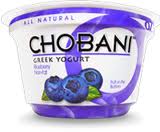I know planning and preparing your holiday meal can be stressful, but one thing to keep in mind while cooking this holiday is food safety and preventing foodborne illness! Foodborne illness can cause nausea, vomiting and diarrhea which only lasts for a day or two in healthy adults but can be more severe in older adults, pregnant women, young children and infants. Even if you are healthy being sick for a couple days over the holidays is never fun!
Here are the four basic food safety measures to help you prevent foodborne illness this holiday!
Clean: The first and most important measure in food preparation.
· Wash hands with soap and warm water for at least 20 seconds before and after handling food.
· Wash food-contact surfaces (cutting boards, utensils, dishes)
· Rinse fruits and vegetables
· DO NOT rinse raw meat. Rinsing meat can cause the spread of bacteria to unwanted areas like counter tops.
Separate: Avoid cross-contamination!
Separate: Avoid cross-contamination!
· Keep raw meats, and eggs away from foods that won’t be cooked.
· Use different cutting boards and utensils for raw foods and foods that won’t be cooked like raw fruits and vegetables.
Cook: Heating food to the appropriate temperatures will kill any harmful bacteria.
· Use a meat thermometer to make sure meat, poultry and fish are cooked to a safe temperature. When checking the temperature insert thermometer into the thickest part of the meat.
· Cook eggs until yolk and whites are firm.
· Don’t eat uncooked cookie dough, which may contain raw eggs or even unsafe raw flour.
Chill: Leaving foods in room temperature for too long can cause growth of bacteria.
· Refrigerate leftovers within two hours.
· Refrigerator should be set below 40°F and freezer at 0°F
· When thawing frozen food:
o Thaw frozen food in the refrigerator, under cold running water, or in the microwave. Food thawed in cold running water or the microwave should be cooked immediately.
· Leftovers should be eaten within three to four days.
· Don’t eat anything that looks or smells questionable. As we dietitians always say..."When in doubt throw it out!"
Visit fightback.org for more information.
Wishing you and your family a happy and healthy holiday!!!
Wishing you and your family a happy and healthy holiday!!!




























